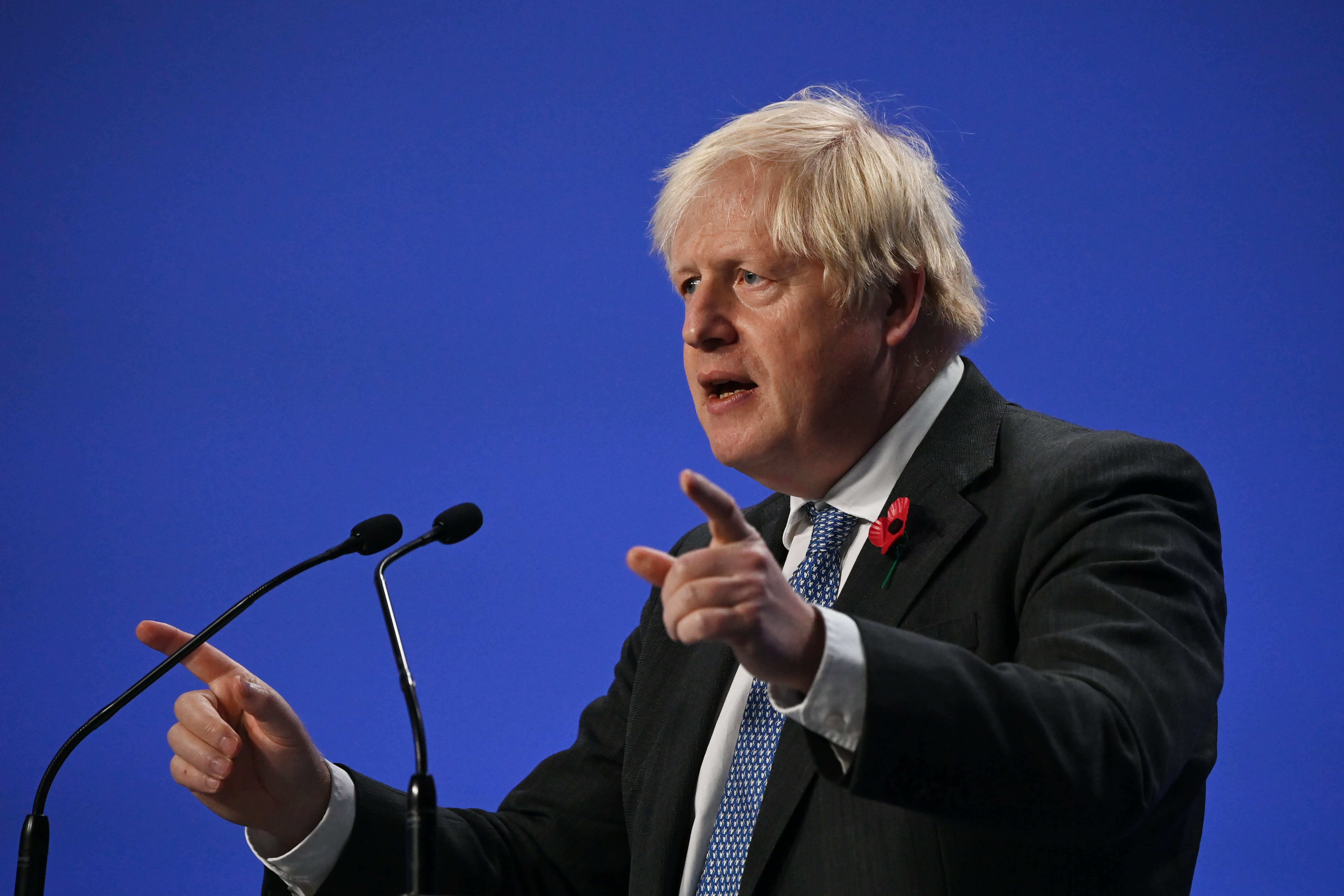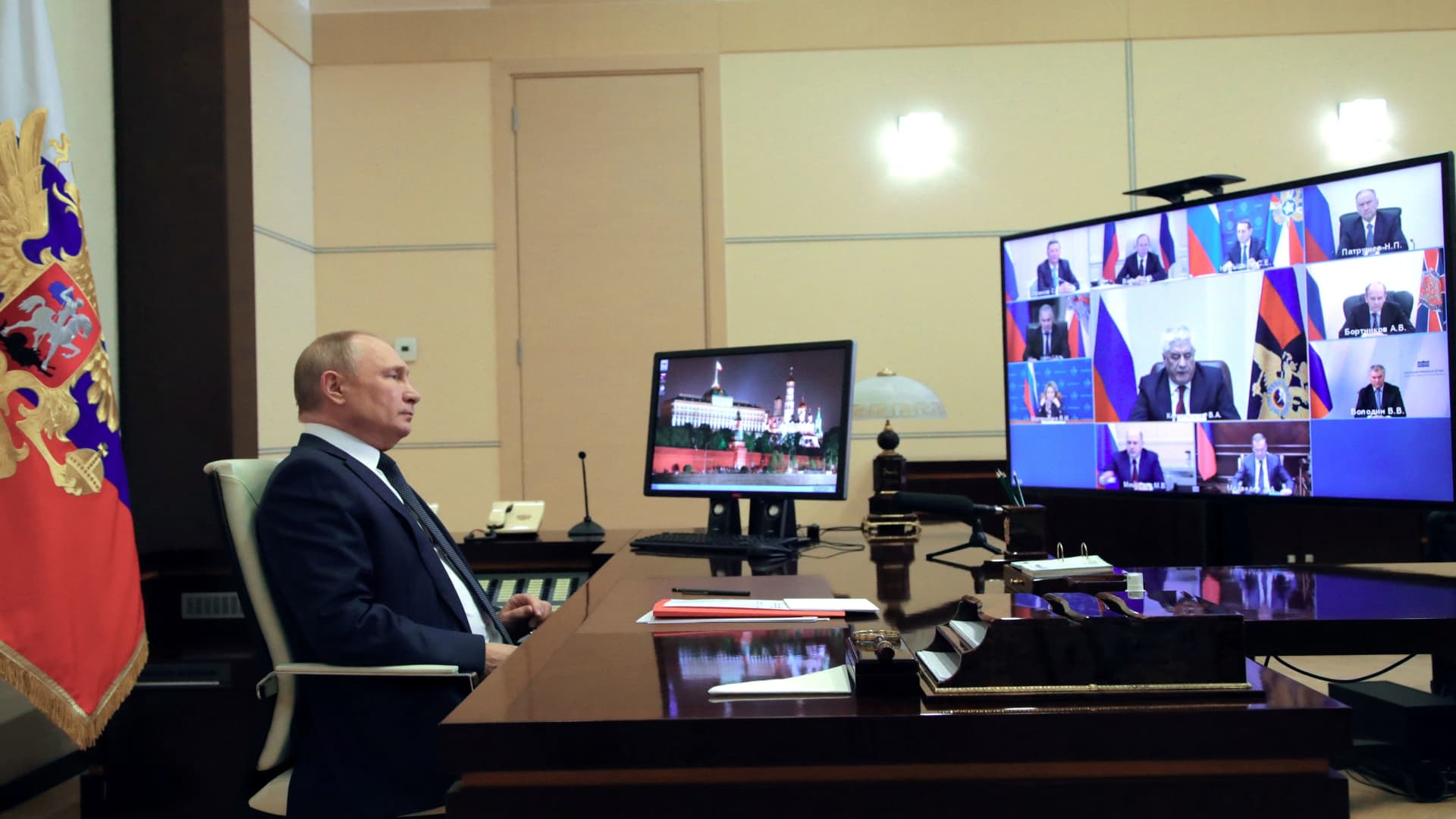A crunch week for central banks will put rate-cut expectations to the test
Major central banks are set to make their final rate decisions of the year in a pivotal week that will test market bets for early interest rate cuts in 2024.

Fed Chairman Jerome Powell prepares to deliver remarks to the The Federal Reserve's Division of Research and Statistics Centennial Conference on November 08, 2023 in Washington, DC.
Chip Somodevilla | Getty Images
A flurry of major central banks are set to make their final rate decisions of the year in a crunch week that will test market bets for rate cuts in early 2024.
The U.S. Federal Reserve on Wednesday will kick off what is poised to be a pivotal week, followed by a "Super Thursday" when the European Central Bank, Bank of England, Swiss National Bank and Norway's Norges Bank will all meet.
Policymakers at the central banks are broadly expected to hold interest rates steady, except for Norway's central bank which warned it would likely raise the cost of borrowing in December.
Investors will be searching for clues in the banks' statements on when rate cutting could start next year as inflation continues to fall away from its highest level in decades.
"The biggest risk to 'risk-on' is the fact that the Fed does not do what the market is telling it that it is going to do, which is slash interest rates over the course of 2024," David Neuhauser, chief investment officer of Livermore Partners hedge fund, told CNBC's "Squawk Box Europe" on Monday.
"The market is telling you one thing, so what the market is doing essentially is calling out the Fed's credibility … and we'll see who's right here."
Rate cuts ahead?
Market participants overwhelmingly expect the Fed to hold rates at 5.25%-5.50%, although traders are pricing in a 25 basis point cut as early as March next year, according to the CME FedWatch Tool.
The Fed has sought to push back on market expectations for aggressive rate reductions next year, however.
Fed Chairman Jerome Powell warned earlier this month that it would be "premature" to speculate when policy might ease and suggested the central bank would be "prepared to tighten policy if it becomes appropriate to do so."
Livermore Partners' Neuhauser said the high market expectations for rate cuts contrast with Powell's recent commentary.
"There's two different dynamics at play: what the market is telling you, and what Federal Reserve Chairman Powell is telling you, let's see who has the credibility this time," Neuhauser said.
Powell has also noted that policy is currently "well into restrictive territory" and said the balance of risks between doing too much or too little were close to balanced.
"When we think about the Fed moving into next year, we think it makes sense that they are on the lookout for when and how much to reduce rates," Sam Zief, head of global FX strategy at J.P. Morgan Private Bank, told CNBC's "Street Signs Europe" on Monday.
"As their policy rate is so restrictive, as the unemployment rate gets closer to neutral, as inflation gets closer to neutral, their policy rate should do the same. The real question is: what is the pace of that?"
The Marriner S. Eccles Federal Reserve building during a renovation in Washington, DC, US, on Tuesday, Oct. 24, 2023.
Valerie Plesch| Bloomberg | Getty Images
Ahead of the Fed's meeting Wednesday, Zief said market participants should be prepared to be slightly disappointed by a lack of clarity over the pace and scale of further interest rate changes.
"Our base case is actually that the Fed isn't going to say all of that much. The dots probably don't move all that much. The statement probably doesn't change all that much," he added.
The Fed's approaching rate decision comes shortly after U.S. job creation showed little sign of abating in November. Nonfarm payrolls grew by a seasonally adjusted 199,000 for the month, beating expectations of 190,000, while the unemployment rate dipped to 3.7%, compared with the forecast for 3.9%.
Economists said at the time that the economic data appeared to reflect a job market that continues to be resilient even after a year of dodging recession fears.
What about the ECB?
Major banks elsewhere are set to follow in the Fed's footsteps with their final respective policy statements on Thursday.
Investors will be closely monitoring the ECB's meeting for any sign the central bank is poised to impose swift rate cuts in 2024. Euro zone inflation, which exceeded 10% last year, came in at 2.4% in November, reflecting its lowest level in more than two years.
Price rises have dropped quickly toward the ECB's target levels of 2% in recent months, fueling investor bets for rate cuts early next year.
Christine Lagarde, president of the European Central Bank (ECB), at a rates decision news conference in Frankfurt, Germany, on Thursday, Sept. 14, 2023. The ECB raised interest rates again, acting for the 10th consecutive time to choke inflation out of the euro zone's increasingly feeble economy.
Bloomberg | Bloomberg | Getty Images
Policymakers have cautioned investors, however, that the "last mile" of tackling disinflation could be the hardest — and it may take twice as long as the battle to get inflation back under 3%.
Economists at Deutsche Bank said in a research note published earlier this month that it was once again bringing forward the timing of the first ECB rate cut to April, citing the latest inflation data and the tone of official commentary. It added that there is also a "significant risk" of a rate cut as soon as March.
"We fear we were too timid," economists at Deutsche Bank said on Dec. 6. "The risk is now earlier and larger cuts, and an ECB more capable of decoupling from the Fed."
Economists at Pantheon Macroeconomics have said that while the consensus now expects the first ECB rate cut in June next year, "we still believe March is a good bet."

 JimMin
JimMin 































